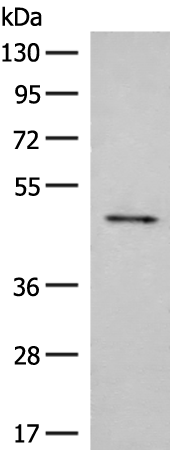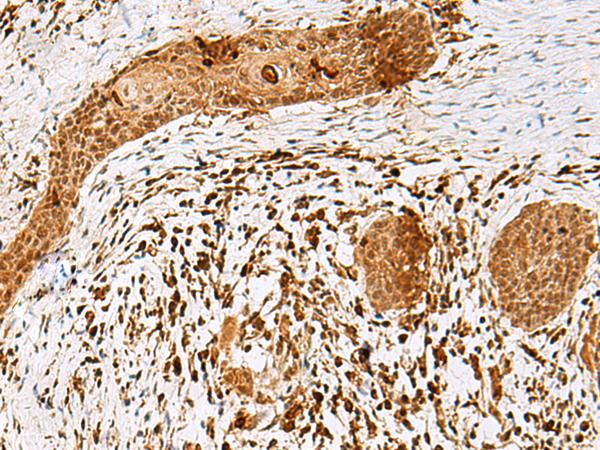SCRN2 Polyclonal Antibody
For reference only. Please follow the manual included in your kit for instructions.
Catalog Number
RD252745A
Product Name
SCRN2 Polyclonal Antibody
Catalog Number
RD252745A
Clonality
Polyclonal
Purification Method
Antigen affinity purification
Isotype
IgG
Host
Rabbit
Background
The SCRN (Secernin) gene family has three vertebrate paralogs, i.e. SCRN1, SCRN2 and SCRN3, which are closely linked to human HOXA, HOXB and HOXD cluster, respectively. SCRN2 (secernin-2) is a 425 amino acid protein that belongs to the peptidase C69 family and the Secernin subfamily. Vertebrate SCRN genes showed a topology of the form (A)(BC), i.e. (Hsa2 Hsa7)(Hsa17), with SCRN2 falling outside the SCRN3–SCRN1 cluster. The SCRN2 gene is conserved in dog, cow, mouse, rat and zebrafish, and maps to human chromosome 17q21.32. Chromosome 17 makes up over 2.5% of the human genome with about 81 million bases encoding over 1,200 genes. Chromosome 17 is linked to neurofibromatosis, a condition characterized by neural and epidermal lesions, and dysregulated Schwann cell growth. Alexander disease, Birt-Hogg-Dube syndrome and Canavan disease are also associated with chromosome 17.
Immunogen Information
Immunogen
Fusion protein of human SCRN2
Swissprot
Q96FV2
Synonyms
scrn2SCRN2Secernin 2Secernin-2Ses2
Calculated MW
47 kDa
Observed MW
Refer to figures
Gene Accession
BC017317
Applications
Reactivity
Human, Mouse, Rat
Tested Applications
WB,IHC,ELISA
Conjugation
Unconjugated
Dilution
WB 1:500-1:2000, IHC 1:50-1:300, ELISA 1:5000-1:10000
Concentration
0.84 mg/mL
Storage Buffer
PBS with 0.05% NaN3 and 40% Glycerol, pH7.4
Storage Instructions
Store at -20°C. Avoid freeze / thaw cycles.


